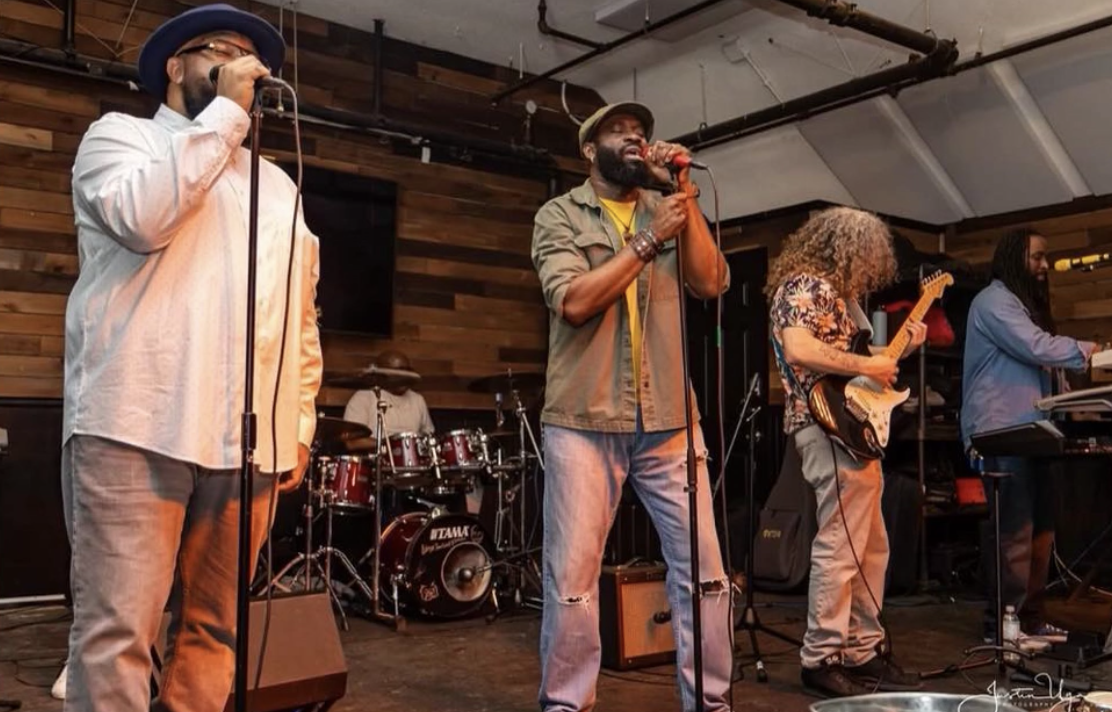Aaron Kibo
Two Boston-area chamber ensembles recently concluded their seasons. Everyone embraces the present in their own unique way.

Radius performs at Pickman Hall, Cambridge. Photo: Courtesy of the artist
Two chamber ensembles recently concluded their seasons. One is drawn from numerous works of romantic solemnity, the other is a thorny soundscape from the mid-twentieth century. Still, both embrace the moment in their own unique ways.
Radius Orchestra performs the world premiere of Elena Ruehr broadway boogie woogie, It both depicts the vivid colors of Piet Mondrian’s paintings and pays homage to the special relationship the composer and orchestra enjoyed over the past quarter of a century.
The range of tributes to composers is impressive. broadway boogie woogie Artistic Director Jennifer Montbach said in her introductory remarks that the show has been named “the largest ensemble cast in Radius’ history.” To put it mildly: the ensemble of flutes, oboes, clarinets, bassoons, French horns, piano and strings practically spilled onto the floor of Cambridge’s Pickman Hall.
But an orchestra this large and integrated can really improvise, especially one that’s incredibly sensitive. Ruhl’s music is full of lilt and tenderness, adding a bit of real boogie-woogie to the rich mix.
The piece consists of four short movements that move forward, leaving behind a series of sharp syncopations. The title of the third movement, “Blue Rag,” even requires the strings and winds to swing like a dance orchestra. “Parade of Toys” ends the work with a cheerful virtuosity that is briefly offset by a lilting fugue.
But inside broadway boogie woogie is “Ghost Song,” which puts the spotlight on oboist Mombach. During her brilliant performance, a calm tranquility emerged from the music. Ruhl’s strategy is basic: Mombach floats a line over a steady pulse that gradually builds up into a stinging mass of dissonance.
George Crumb’s whale sound In contrast, the mysteries of the deep sea are explored. Composed in 1971, this trio for flute, cello and piano is a theatrical performance – it requires the orchestra to imitate the song of a whale. The musicians wore black masks and performed under a soft blue light – a dramatic effect that easily evoked the world beneath the waves.
These instruments convey the countless beauties of the unspoilt natural world. Sarah Brady’s flute conjures up images of whispers, distant moans, and even painful, plaintive cries. Miriam Bolkosky’s cello responded with similar virtuosity, while Sarah Bob produced a metallic sound by plucking and rubbing the strings inside the piano the sound of. For more than 20 minutes, these diverse voices form a conversation that is both alluring and otherworldly. In the final minutes, when Crumb’s score morphed into sonorous chords and more traditional melodies, the musicians responded with enthusiasm and reverence. This is music at its most exquisitely raw, and Radius explores its depths.
Steve Reich’s new york counterpoint provides rhythmic intrigue. Swing and bebop music provided inspiration for this familiar tune. The original version (twelve clarinets) established a cunning rhythm. But the Radius performance featured a solo by clarinetist Eran Egozy, with recordings of other parts by composer and clarinetist Evan Ziporyn.
The effect remains mesmerizing, with the slowly accumulating throbbing pulses producing an ironically subdued atmosphere. Egozy’s phrasing blends well with the recording, especially when jazz dominates, and appears to be more flexible. The performance is wonderful and majestic.
Joseph Bologne’s Sonata for Violin and Viola in B flat provides another wonderful pairing – this time through the performance of live musicians.
Published after the composer’s death in 1799, this sonata combines the virtuoso’s flamboyant style into strict classical form. The violinist is the star of the show. In this role, Gabriela Díaz burst her line with great energy in the first movement. Violist Noriko Futami provided a solid backdrop that charged with equal ferocity.
Although not as creative as Mozart’s duets, the harmonic style of this sonata is bold and innovative. Its themes and variations offer some real surprises, and Diaz performs each one with a flourish that only disappears touchingly in the final bars.

The Chameleon Arts Troupe performs at First Church in Boston. Photo: Courtesy of the artist
Another noteworthy season finale is provided by the Chameleon Arts Ensemble, whose program features music by Guy Ropartz, Hanns Eisler and Franz Schubert of Boston’s First Church.
But David Bruce’s the comfort of rain What stays in my memory the most. Written for oboe, cello, percussion and harp, this score captures the soothing effect of listening to the sound of rain. The first of five movements is filled with a sense of unease. But as the work unfolds, this is all replaced by a gentle harmony. In the fourth movement, the pulse develops from a slight flutter to a full-blown sound. The piece ends peacefully, conveying a blues-inspired Zen-like tranquility. Musicians Nancy Dimock (oboe), Sarah Rommel (cello), Matt Sharrock (percussion), and Madeleine Olson (harp) play with quiet momentum that provides this music compelling reasons.
Hans Eisler’s Fourteen ways to describe rain Depicting the more violent and unpredictable elements of gloomy weather. The dark tones of the work—it was scored for the Ensemble Pierrot—are reminiscent of Arnold Schoenberg. But Eisler’s dense sonic world is filled with uniquely vivid imagery. The music rose, shimmered, and splintered into jagged shards, like a picture made from shards of broken glass. The Chameleons played the piece with the required punch.
Guy Ropacz’s Preludes, Oceans and Songs This turned out to be another welcome discovery. Here, too, the performance invites comparison with more familiar works – in this case, Debussy’s Sonata for Flute, Viola and Harp. Ropacz’s score adds violin and cello to this mix and continues to capture the deep resonance of French pastoralism (the composer played an important role in the cultural renaissance of Brittany). The Chameleons performed “The Marines” with tittering delight. The final “Chanson” has a sudden surge of anger, which feels wonderful.
The Chameleons concluded with Schubert’s “Trout” Quintet, with an ideal balance between piano and strings. Pianist Jessica Xylina Osborne’s arpeggios are joined by violinist David Bernat, violist Caitlin Lynch, cellist The lilting beauty of Rafael Popper-Keizer and bassist Randall Zigler provides enough restraint. Other moments were wonderful on demand: the scherzo was pastoral, while variations on the famous theme and Schubert’s beloved Trout danced with Haydnian grace. The finale is punctuated by a humorous false ending that sparkles with unforgettable intensity.
Aaron Kibo has been a classical music critic in Boston since 2012. music era, Corymbella, boston classical review, American early musicand BBC Radio 3.




